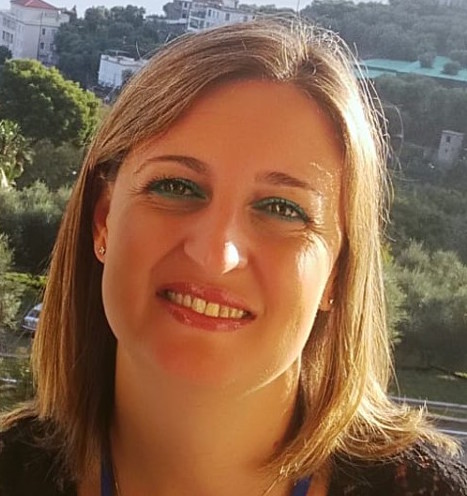
Key words: Cellular and Molecular Biology, intracellular membrane trafficking, Biochemistry and microscopy.
My research activity deals with the study of the molecular mechanism able to regulate intracellular membrane trafficking. Actually, our aim is to understand the role of mono ADP-ribosylation in the Rab14-mediated intracellular traffic, by dissecting the functional role of this post-translational modification in the regulation of endosomal maturation.
Since the beginning of my scientific career I have been fascinated by cellular and molecular biology. In particular, my research activity focused on:
1) the signal transduction pathways which are activated during the acquisition of epithelial cell polarity,
2) the study of molecular mechanism involved in the secretory pathways in polarized cells;
3) Pathogenesis and molecular mechanisms of papillomavirus induced cancer in animals.
Since November 2020, she started working in Laboratory of Innante immnity, Inflammation, and Nanosafety
Education:
Abilitazione Scientifica Nazionale (2015) ASN for associate professor in Veterinary Pathology and food inspection of animal origin.
School of Clinical Pathology (2012) Faculty of Medicine of the University of Naples “Federico II”, Italy.
PhD in Genetics and Molecular Medicine (2008) University of Naples “Federico II”,Italy.
Master of Science in Medical Biotechnology (2003) University of Naples “Federico II”,Italy.
Position: CNR Researcher
Honours/Awards:
2014 – 2018: Postdoctoral Research Fellowship at the Institute of Protein Biochemistry – CNR, Naples, Italy. Project: “euro-bioimaging, a diffuse european research infrastructure to provide access to imaging technology to all European biomedical researchers”.
2009 – 2014: Postdoctoral Research Fellowship at Department of Veterinary medicine and animal productions. University of Naples “Federico II”.Project: Pathogenesis and molecular mechanisms of animal papillomavirus induced cancer.
2010 :Short-mobility Project, Institute of Infection, Immunity and Inflammation, University of Glasgow Scotland – University of Glasgow –Project: Analysis of PDGFbeta receptor mutation in primary sarcoid cell line resistant to Imatinib. Supervisor Prof. L. Nasir
2008 – 2009: Postdoctoral Research Fellowship at Department of Molecular and Cellular Biology and Pathology. University of Naples” Federico II”- Project: Molecular mechanism underlying the role of Rac1 in the acquisition of polarized phenotype in epithelial cell line.
2003 – 2007 : PhD student scholarship, University of Naples “Federico II”, Department of Molecular and Cellular Biology and Pathology “L. Califano “. project title: VGF protein molecular interaction and Its sorting into secretory granules.
- Catara G, Corteggio A, Valente C, Grimaldi G, Palazzo L. Targeting ADP-ribosylation as an antimicrobial strategy.Biochem Pharmacol. 2019 Sep;167:13-26. doi: 10.1016/j.bcp.2019.06.001.
- Grimaldi G, Catara G, Palazzo L, Corteggio A, Valente C, Corda D. PARPs and PAR as novel pharmacological targets for the treatment of stress granule-associated disorders. Biochem Pharmacol. 2019 Sep;167:64-75. doi: 10.1016/j.bcp.2019.05.019
- Eleni C, Corteggio A, Altamura G, Meoli R, Cocumelli C, Rossi G, Friedrich KG, Di Cerbo P, Borzacchiello G. Detection of Papillomavirus DNA in Cutaneous Squamous Cell Carcinoma and Multiple Papillomas in Captive Reptiles. J Comp Pathol. 2017 Jul;157(1):23-26.
- Altamura G, Corteggio A, Borzacchiello G. Felis catus papillomavirus type 2 E6 oncogene enhances mitogen-activated protein kinases and Akt activation but not EGFR expression in an in vitro feline model of viral pathogenesis. Vet Microbiol. 2016 Nov 15;195:96-100. doi: 10.1016/j.vetmic.2016.09.013. Epub 2016 Sep 21.
- Altamura G, Corteggio A, et al.,Transforming properties of Feliscatus papillomavirus type 2 E6 and E7 putative oncogenes in vitro and their transcriptional activity in feline squamous cell carcinoma in vivo. Virology 2016; 496:1-8.
Download pubblications file
